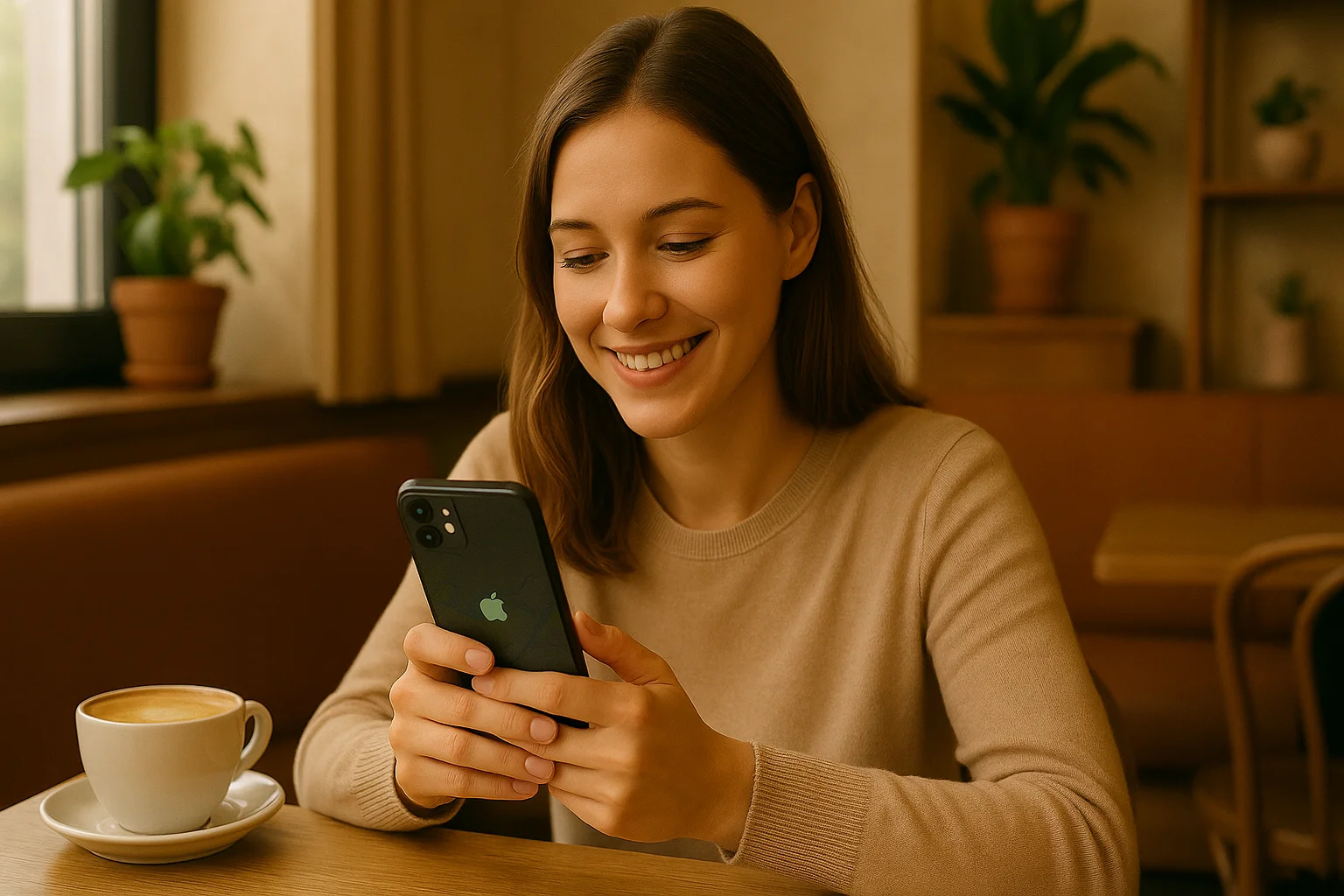Let us face it — there is nothing inherently creepy about sharing your location. Whether you are letting your partner know you got home safely, meeting up with a friend in a crowded place, or just keeping an eye on your teenager’s bus ride — location sharing can make life easier and safer.
But there is one catch: how to share location on iPhone without compromising your privacy. That is where this guide comes in. Because yes, there is a right and wrong way to do it. So, first of all we will start with understanding how Apple’s built-in features actually work — and how you can use them wisely.
Apple’s “Share My Location” Feature — What It Actually Does
Apple devices come with a powerful tool called Find My (formerly Find My Friends), which lets you share your real-time location with others. You will find it under Settings > [Your Name] > Find My > Share My Location.
When enabled, this feature allows trusted people to see where you are. It works even if you are not in Wi-Fi range, as long as your phone has a signal. You can choose to share indefinitely, for a few hours, or just once.
What’s important to remember:
- Your location is tied to your Apple ID — so it syncs across all your devices.
- Only people you manually approve can see you.
- You can stop sharing at any time with a single tap.
Quick tip: If you use multiple Apple devices, make sure you are sharing from the one you actually carry with you (usually your iPhone, not your iPad).

3 Safe and Easy Ways to Share Your Location on iPhone
Here are the top three privacy-conscious ways to share where you are:
- Using the Find My App
Open the Find My app, tap “People,” then “+ Share My Location.” Choose a contact, pick how long to share, and you’re good to go. The option is ideal for family members or close friends. - Via iMessage
In any iMessage conversation, tap the contact’s name at the top, then “Share My Location.” This method is quick, especially for short-term sharing. You can choose between one hour, until the end of the day, or indefinitely. - Through Apple Maps
If you’re using Apple Maps for directions, you can easily share your estimated arrival time. Just swipe up on the route card and tap “Share ETA.” Your contact gets live updates on your progress — great for letting someone know you are on the way.
Pro tip: Never set location sharing to “indefinitely” unless it is with someone you trust completely. Even then, review your sharing list every so often to stay in control.
That’s the basics covered. Now that you know how to share your location safely. You might be surprised how many people leave their location for the wrong people without realizing it. Ready to level up your privacy game? Let’s go.
Avoiding Pitfalls and Exploring Smarter Location Tools
The Most Common Privacy Mistakes People Make
So you’ve figured out how to share your location on iPhone — great! But here is the truth: many users unknowingly compromise their privacy by making small, avoidable mistakes. They might seem harmless, but over time they can add up and bring only unnecessary risks.
Here are some of the most frequent missteps:
- Sharing indefinitely with too many people
When you select “share indefinitely,” you are essentially giving someone a permanent backstage pass to your life. Most people forget they even set it that way, leaving old friends, exes, or distant acquaintances with access they shouldn’t have.
Tip: Regularly check who you’re sharing with under Settings > Privacy & Security > Location Services > Share My Location.
- Using public Wi-Fi while sharing
Public networks can be risky. If your device is compromised while sharing your live location, you are revealing your whereabouts to more than just your contacts.
Tip: Always use a VPN or wait until you’re on a secure network before enabling location sharing.
- Not realizing some apps track in the background
Some third-party apps quietly access your location even when you are not actively using them. That is not always bad — but it is important to know who’s watching.
Tip: Go to Settings > Privacy & Security > Location Services and review which apps have “Always” access. Switch them to “While Using” if possible.
Need More Control? Try a Dedicated Location-Sharing App
While Apple’s built-in tools are handy, sometimes you need more features. Maybe you want real-time movement tracking, location history, or group location sharing — all without sacrificing your privacy.
That is where tools like Number Tracker come in. Built with family safety in mind, it allows you to:
- Share live location only when needed
- Create custom groups (e.g. kids, partner, parents)
- Get notified when someone arrives or leaves a set place
- See a timeline of visited locations (super useful for parents)
Unlike many apps that collect more data than they should, Number Tracker is designed with security and transparency in mind. It’s a great alternative if you want to go beyond the basics of Apple’s location features (especially in situations where flexibility and real-time updates matter) — think school pickups, travel safety, or caring for elderly relatives.
Pro tip: If you are traveling abroad or coordinating with people outside of iOS, a cross-platform tool like Number Tracker is often more practical than Apple’s ecosystem-locked options.

Taking Back Control — And Staying One Step Ahead
There comes a time when sharing your location is no longer necessary — maybe you’ve broken up with someone, stopped working with a colleague, or simply don’t want to broadcast your movements anymore. Good news: turning off location sharing is simple, but you need to do it the right way to make sure no traces remain.
- Stop Sharing via Find My
Open the Find My app → Tap on the person’s name → Scroll down → Tap Stop Sharing My Location. They won’t get a notification, but they will see that you’ve stopped sharing if they check.
- Revoke app permissions
Apps that have access to your location can continue to track you silently. Go to Settings > Privacy & Security > Location Services, scroll through the list, and disable access for apps you don’t fully trust.
Pro tip: Always choose “While Using the App” instead of “Always,” unless it’s absolutely necessary (like a maps or family safety app).
- Disable location sharing entirely
If you want to go off the radar completely: Settings > [Your Name] > Find My > Share My Location — and toggle it off. This stops sharing across all devices linked to your Apple ID.
How to Know If Someone’s Secretly Tracking You
Feeling paranoid? In today’s digital world, that’s not always a bad thing. Here are signs someone may be tracking your location without your consent:
- You get strange notifications from Apple saying your location is being used by an unknown device.
- Your battery drains unusually fast, which can be a red flag for background tracking.
- AirTags: If there’s an unknown AirTag moving with you, your iPhone will usually notify you. Don’t ignore it — tap the alert and follow the steps to disable it.
- Shared Apple IDs: If someone has access to your Apple ID, they can track your device without your knowledge. Set up two-factor authentication and change your password immediately if you suspect anything.
Pro tip: Check Settings > Privacy & Security > Location Services > System Services > Significant Locations. If you see unfamiliar addresses, it’s worth digging deeper.
Share with Purpose, Not Just Convenience
Sharing your location doesn’t have to mean giving up your privacy. As with most tech tools, how you use it makes all the difference. No matter if you are checking in with loved ones or using advanced tools like Number Tracker to manage family safety, the key is intentional sharing — not thoughtless broadcasting.
Before you hit “Share,” ask yourself: Do they really need to know where I am? And just as important: Am I still the one in control? Stay smart. Stay safe. And when in doubt — share less, not more.

